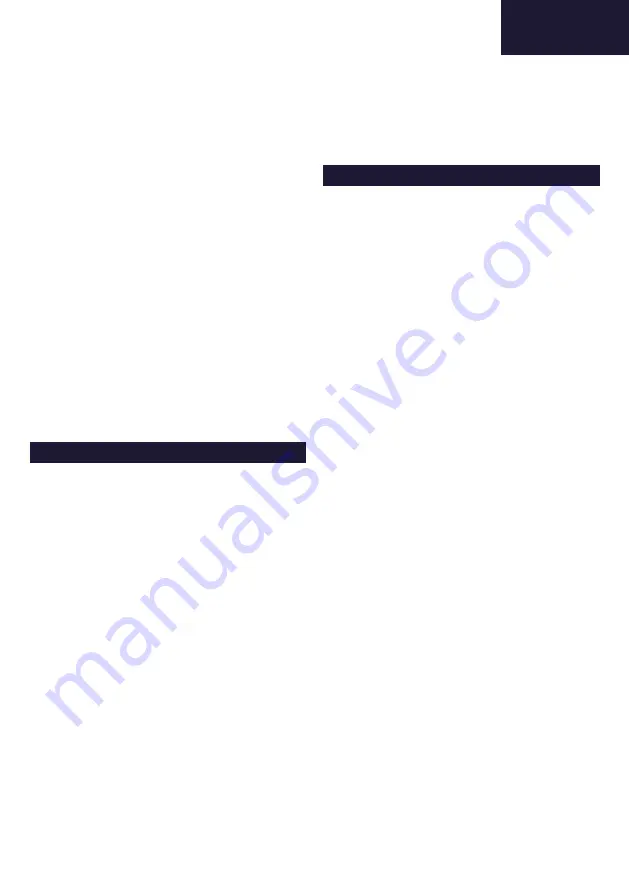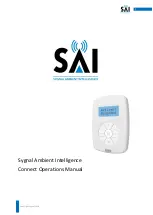
3
SR 307 Compressed air attachment
English
Contents
1
General information / Approval
1.1
Applications
1.2
System description
1.3
Breathable air
2
Use
2.1
Unpacking
2.2
Packing list
2.3
Functional check
2.4
Putting the equipment on
2.5
Taking the equipment off
2.6
Cautions / limitations
3
Technical specification / S – Special or
Critical Users Instructions
4
Maintenance
4.1
Cleaning
4.2
Storage
4.3
Maintenance schedule
4.4
Spare parts
4.4.1
Regulator
4.4.2
Breathing hose
5
List of parts
5.1
Spare parts
5.2
Accessories
6
NIOSH/DHHS Labels (Separate insert
pages included with this booklet)
1. General information / Approval
The Sundström model number SR 307 Compressed air attach-
ment is a Type C, Continuous Flow, Supplied Air Respirator
(CF/SA). SR 307 has been tested and approved by NIOSH to
provide the approved level of respiratory protection to a user.
The Sundström SR 307 compressed air attachment can be
used together with Sundström half mask SR 90-2, SR 100 and
with full face mask SR 200.
1.1 Applications
The SR 307 is an attachment that enables a given half mask
or full face mask to be converted between an Air Purifying
Respirator and a Supplied Air Respirator.
It is particularly well suited if the user is doing hard or sustained
work, and if the pollutants have poor warning properties or are
particularly toxic.
The SR 307 is made of materials which do not give rise to
frictional sparks.
1.2 System description
The SR 307 mounted in a Sundström half mask or full face mask
is designed for connection to a suitable source of breathable
compressed air. The pressure in the mask prevents polluted
ambient air from entering the mask. A compressed air supply
hose approved for breathable air is connected to a regulator
which is secured to the user’s belt. The airflow rate to the mask
can be adjusted by means of the regulator. The regulator is
equipped with a warning whistle which will come into operation
if the air flow rate should drop below the recommended value.
From the regulator, the air flows through a breathing hose to a
compressed air attachment, and then into the mask.
1.3 Breathable air
Breathable air shall conform to the requirements of CGA G-7.1
Grade D or higher quality.
2 Use
2.1 Unpacking
Check that the equipment is complete in accordance with
the packing list and that no transport damage has occurred.
2.2 Packing list
• Compressed air attachment with hose
• Regulator mounted on a belt
• Locking ring
• Flow meter
• User’s instructions
2.3 Functional check
Check that the mask is complete, correctly assembled,
thoroughly cleaned and undamaged.
Check that the airflow – measured through the mask – is at
least 5.3 CFM (150 l/min).
Proceed as follows:
• Connect the breathing hose to the regulator. Fig. 2.
• Connect the compressed air hose to the regulator. Fig. 3.
• Turn the regulator knob anti-clockwise as far as it will go in
order to throttle the airflow rate to a minimum. Fig. 2.
• Place the mask in the bag, and grip the lower part of the bag
so that the bag seals around the breathing hose. Fig. 1:4
• Grip the flow meter with the other hand and hold it so that
the tube points vertically up from the bag.
• Read the position of the ball in the tube. It should float level
with or just above the marking on the tube.
Hint: Turn the bag inside out and use it for storing the
equipment
If the flow rate is below the minimum value, check that
• the flow meter is vertical,
• the ball can move freely,
• the air supply is not restricted by kinks or other restrictions
in the hoses.
N.B. If the flow rate is below the minimum value, the
equipment must not be used. Get in touch with the supplier
or manufacturer.
2.4 Putting the equipment on
• Put the belt on and adjust the belt length.
• Arrange the regulator in a way that allows easy adjustment
of the flow rate and a strict watch over the breathing hose,
i.e. it must not be placed on the back of the waist.
• Then adjust the harness so that the mask is held firmly but
comfortably in place. See the user instructions for the mask
you are using.
• Then fit the compressed air attachment to the mask. The
locking ring should always be used for securing the mounting
of the compressed air attachment. Fig. 1:6
• Connect the breathing hose to the control valve outlet. Fig. 2.
• Unroll the compressed air hose and make sure that it is not
twisted.
Summary of Contents for SR307
Page 12: ...12 1 9 2 1 11 8 7 6 4 3 5 10...
Page 13: ...13 2 3 6 5 4...
Page 14: ...Notes...
Page 15: ...Notes...
Page 16: ...L37 1421 Rev 07 20160808...


































